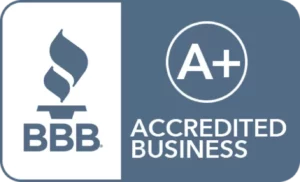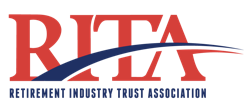Self-employed individuals, such as freelancers and contractors, make up a large percentage of the U.S. economy. This demographic is growing every year. However, recent data from the Pew Charitable Trusts reveals that very few people who are self-employed are saving for retirement. The data was pulled from three groups:
- Employees who work at a company (non-self employed)
- Self-employed at a multi-person company
- Self-employed at a single-person job
The data, which was taken from a 2012 University of Michigan study, shows that 72% of non-self employed individuals who work for a company contribute to their work-sponsored retirement plan. This is a stark contrast from the two self-employed groups that were studied. Only 30% of self-employed individuals at a multi-person company contribute to their retirement plan. Individuals who are self-employed and work at a single-person job fare much worse, as only 13% participate in a workplace retirement plan.
Why Are the Self-Employed not Saving for Retirement?
There a few factors that make it easier for employees who work at a mid-to-large sized company to participate in a workplace retirement plan. First, the plan is chosen for them, like a 401(k). They do not have to go through the task of researching and selecting the retirement plan that best fits their company needs. Additionally, when they are eligible for enrollment, they are often notified by the HR department, and automatic enrollment is often available.
Even though there are many retirement plan options available to self-employed individuals (shown below), these individuals must do the “heavy lifting,” such as determining which retirement plan is best for their company.
Self-Employed in Multi-Person Companies Own More Assets
The study revealed that, while only 30% of self-employed individuals save in a workplace retirement plan, they hold more assets than any of the groups studied.
Self-employed individuals who work at a multi-person company own $186,000 in median plan assets, while regular employees who work a traditional company own $51,000 in plan assets. This could largely be due to the fact that people who own multi-person companies are established in a high-earning field, such as lawyers, doctors and engineers. As a result, they can afford to put away more for retirement.
However, self-employed individuals who own a single-person company can contribute even more to their retirement plan than their non-self employed counterparts. This is because they are eligible for the Solo 401(k), also known as the Self-Directed 401(k). This retirement plan has the highest maximum contribution of any IRA as well as the traditional 401(k).
Retirement Plans for the Self-Employed
Although it may be more challenging for self-employed individuals to establish a retirement plan for their company, retirement plans do exist. They can open one of the following:
- Traditional IRA – maximum contribution in 2023 is $6,500 (under age 50) and $7,500 (over age 50)
- Roth IRA – maximum contribution are the same as above
- SEP IRA – maximum contribution in 2023 is $66,000 with no catch-up contribution if you are over age 50
- SIMPLE IRA – maximum contribution in 2023 is $15,500 (under 50) and $19,000 (over age 50)
- Solo 401(k) – maximum contribution in 2023 is $66,000 (under age 50) and $73,500 (over age 50)
The Traditional and Roth IRA are both good retirement plans, however they are not designed for self-employed individuals. The SEP IRA, SIMPLE IRA and Solo 401(k) were designed by the government specifically to aid the self-employed. For this reason, if you are self-employed and interested in establishing a workplace retirement plan, you should focus on these three.
SEP IRA and SIMPLE IRA
Because the SIMPLE IRA has such a low contribution limit, it’s best to choose either the SEP IRA or the Solo 401(k).
While the SEP IRA and the Solo 401(k) share many similarities, the SEP IRA does not offer a catch-up contribution for individuals over the age of 50 and does not allow you to contribute as an employee.
According to tax attorney and President of IRA Financial, Adam Bergman, the Solo 401(k) plan is the best retirement plan for individuals who generate some form of self-employment income.
Solo 401(k)
The best plan for the self-employed is the Solo 401(k). With higher maximum contributions and the $6,000 catch-up if you are over age 50, there is no competition.
Other reasons to establish a Solo 401(k) if you are self-employed include:
Tax-Free Loan Option: Borrow up to $50,000 or 50% of your account value (whichever is less) to use for any purpose.
Easy Administration: There is no annual tax filing or information returns for a plan that does not exceed $250,000 in assets.
No need to establish an LLC: LLCs can be costly, especially depending on which state you live in. With a Solo 401(k), the trustee (you) can make investments without the need of an LLC.
Strong Creditor Protection: Most states offer better creditor protection for this retirement plan than a Traditional IRA. Additionally, Individual 401(k) Plan assets are protected against creditor attack in a bankruptcy proceeding.
Roth After-Tax Benefit: You have two formats with a Solo 401(k): pretax, or Roth (after-tax). With a Traditional IRA, you only have the option of pretax. With the Roth option, your money can grow in its retirement account tax-free. And of course, when you withdraw at retirement, you pay no additional taxes.
Non-recourse Leverage Exception: You can invest in your own business and real estate investments without penalty. By using non-recourse funds with a Solo 401(k), you will not trigger the Unrelated Debt Financed Income Rules and the Unrelated Business Taxable Income (UBTI and UBIT). This exception does not apply to IRAs.
Key Takeaway
It’s important to save for retirement, no matter where you work or what you do. Whether you choose a Traditional IRA or a Solo 401(k), the bottom line is this: put money away for retirement.
Social security is dwindling and will not be sufficient to maintain a comfortable retirement. In the past, individuals could look forward to a fat pension after leaving their traditional 9-to-5, but times have changed.
If you’re self-employed, it is important to establish a plan that best fits your business needs and your goals for retirement. This is why we make such a strong case for the Solo 401(k). Specifically designed for the self-employed, you can’t go wrong. And with its maximum contribution of $66,000-$73,500 for 2023, you can put aside a large investment towards your retirement.











